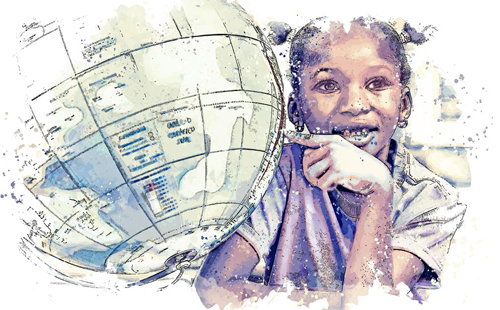Her education, our future
The education of girls and women is one of the most powerful drivers of human development. Audrey Azoulay, director-general, UNESCO, shares details of a new initiative designed to fast-track action on girls’ and women’s education – and enable them to play a transformative role in society
Despite mobilised action worldwide, this year’s UNESCO projections reveal the world is not on track to achieve quality education for all by 2030. If current trends continue, 220 million children and youth will still be out of school by then. Girls’ and women’s education is among the most powerful accelerators for human development, and UNESCO joins forces with G7 members to strengthen efforts in this area.
UNESCO is committed to ensuring that all children, youth and adults benefit from quality education and equal learning opportunities throughout life. Girls’ and women’s education is a fundamental right. It is also both key to achieving Sustainable Development Goal 4 and an indispensable lever for sustainable development as a whole.
This is why UNESCO considers it an utmost priority and launched, during the G7-UNESCO International Conference on Innovating for Girls’ and Women’s Education in Paris in July 2019, its new initiative, Her Education, Our Future, to fast-track action on girls’ and women’s education.
A development multiplier
Education empowers girls and women – and this is the most powerful development multiplier. It allows them to improve their earnings, take better care of themselves and their families, and transmit better education and life prospects to their children. It also allows them to play a transformative role in the development of their societies. If all women have a secondary education, child deaths will be cut in half, saving three million lives. Twelve million children will be saved from malnutrition. Girls’ and women’s education saves lives and strengthens societies. Bright girls lead to a brighter future for all.
Today, 132 million girls are out of school. Although UNESCO’s report uncovered that on average parity in access to schooling has been reached globally, it also highlights that there are important disparities among countries, and wide gaps among the poorest families and with higher levels of education. Only two in three countries have achieved gender parity in primary education, one in two countries have achieved it in lower secondary education, and a mere one in four in upper secondary education.
Our efforts must therefore continue to reach gender parity in access to schooling where it has yet to be reached, as well as to ensure that girls and women remain in school. Today, only 50% of girls worldwide complete upper secondary school. This ratio falls to an alarming 13% in low-income countries. In the poorest families in sub-Saharan Africa, between 2013 and 2017, for every 100 boys, only 30 girls completed secondary school.
Obstacles to female education
We must also ensure girls learn effectively and are provided with the same opportunities as boys. This requires having a comprehensive approach to quality education and understanding the specific obstacles girls encounter – whether they be domestic chores, violence, or early marriage and pregnancy – that keep them away from school.
UNESCO’s O3 programme – Our Rights, Our Lives, Our Future, which delivers health education across Africa – aims to keep girls in school through reducing early pregnancies and health issues. We also support programmes that fight violence and discrimination occurring in school or conveyed through teaching and learning materials, and the stereotypes that prevent girls and women from pursuing higher studies or turning to scientific, technological or digital careers. The digital sector may be driving the evolution of today’s societies, but only 24% of jobs in the digital sector are held by women. This digital gender divide must be closed.
UNESCO’s strategy considers all of these dimensions. Her Education, Our Future thus focuses on three pillars to accelerate change: better data, better policies and better practices.
Better and up-to-date data is key in elaborating policies and education plans that focus on the right issues. Thanks to the UNESCO Institute for Statistics and UNESCO’s Global Education Monitoring Report team, we can monitor progress and understand obstacles to girls’ and women’s education.
Better policies are the second pillar for progress as gender equality cannot be achieved without strong political will and accompanying strategies. Only 44% of countries have committed to ensuring parity in education. A critical step is to ensure that all countries have legal frameworks that call for gender equality in education. Child marriage, still permitted in 117 countries and territories, must be prohibited and girls must be allowed to continue their education after early pregnancy. To monitor legislative frameworks and communicate on the situation across countries, UNESCO launched an interactive eAtlas during the G7-UNESCO conference. We stand ready to accompany governments in developing policies that specifically address gender equality in and through education. UNESCO is a key partner of the G7 initiative Gender at the Center, which will support such gender-responsive education sector planning.
Finally, for education to lead to effective learning and skills development for girls and women, we need to encourage better practices, in school, and out of school, through informal education and the use of new technologies, as well as lifelong learning. Through programmes involving skills development and digital skills, essential in today’s fast-changing world, UNESCO is set on empowering girls and women effectively.
This initiative will bring together UNESCO’s efforts as a whole and those of our partners, including young women themselves. In view of the G7 summit in Biarritz, we call on all countries to not only strengthen their investments, but also accelerate long-term policy changes in favour of quality education, teacher development and safer learning environments for every girl and boy.












